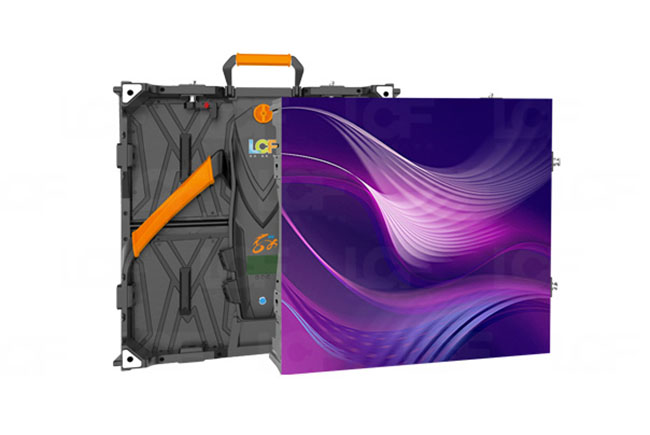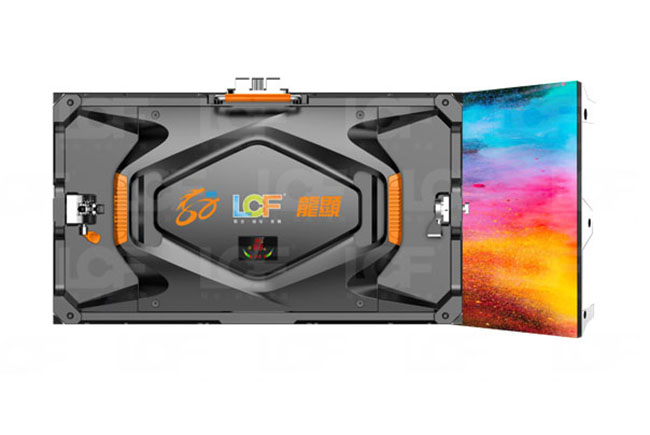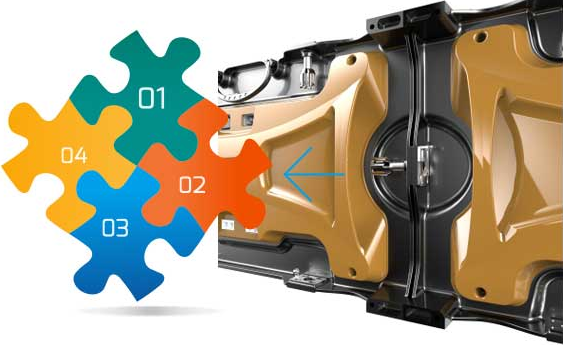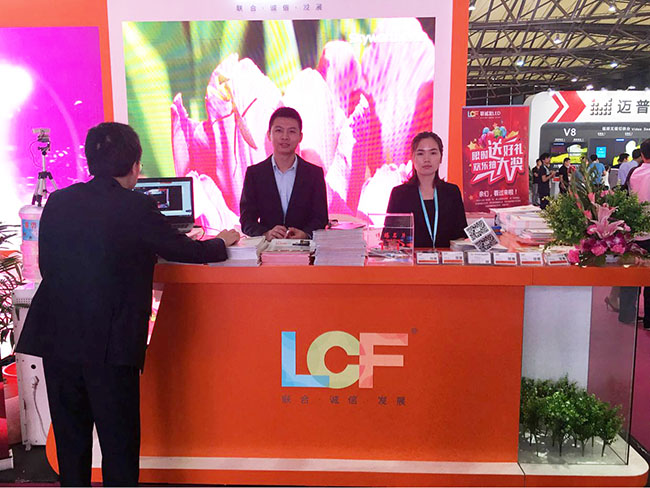Publisher: Supplier of LED Display Time: 2019-05-27 16:49 Views: 4289
Not long ago, after the emergence of common cathode LED display power supply technology, it attracted great attention from the market. This power supply method can achieve 75% energy saving, and its excellent performance has attracted everyone's attention. Why is the power supply technology of common cathode LED display so excellent?
1. What is a common-cathode LED display? "Common-cathode" refers to the common-cathode power supply method. The common-cathode LED display adopts the power supply of R, G, and B separately, and accurately distributes the voltage and current to the red, green, and blue lamp beads. The current passes through the lamp bead to the negative electrode of the IC, the forward voltage is reduced, and the on-resistance is small.
2. What is the difference between common cathode/common anode LED display?
1. The power supply direction is different: the common anode LED display current flows from the PCB board to the lamp beads, and the RGB lamp beads are uniformly powered, which increases the forward voltage drop of the circuit; the common cathode LED display current passes through the lamp beads and then to the IC negative electrode, and the positive The forward voltage is reduced, and the on-resistance is small.
2. The power supply voltage is different: the common anode LED display usually supplies a voltage higher than 3.8V (such as 5V) to the red, green and blue lamp beads, and the power consumption is large; the common cathode LED display is based on red, green, and blue LEDs. The actual voltage required by the three blue chips (the voltage of the red LED is about 2.5V, and the voltage of the blue and green LEDs is about 3.8V) is separated and accurately powered, the power consumption is small, and the heat generated by the LED display is much lower.

3. Why is the common-cathode LED display lower in heat: Through the comparison of the above-mentioned common-cathode and common-anode power supply methods, we know that the common-cathode LED display consumes much less electricity than the common-anode LED display, but the common-cathode LED display is much lower than that of the common-cathode LED display. Conventional common anode LED displays have much lower heat.
The LED module part will be designed with an aluminum bottom shell. The heat on the PCB board is directly transferred through the aluminum, and the heat generated by the light-emitting chip and the driver IC is directly dissipated through the aluminum bottom shell. The thermal resistance is small, the heat transfer area is large, and the whole The aluminum bottom case is the heat sink of the LED chip. The bottom case is made of die-cast aluminum alloy. The flatness and consistency of the LED display are also greatly improved, and the weight of the product is reduced and materials are saved while ensuring the hardness and strength of the product.
After the service life of the LED display screen is over, the aluminum alloy material of the bottom case can be fully recycled and reused to reduce the environmental load. Aluminum alloy products have excellent oxidation resistance and strong environmental adaptability, and can be used for a long time in any environment without aging. The die-cast aluminum alloy material also enables the product to have sufficient resistance to electromagnetic wave interference and radiation, meeting the special requirements of the EU EMC Class B and the US FCC and other first-tier markets for the radiation resistance of LED displays, improving the international competitiveness of the product.
The conventional plastic bottom case has poor heat dissipation, and it is easy to age, crack and deform when used in harsh external environments for a long time, which affects the flatness and service life of the LED display. Another disadvantage of the plastic bottom case is that it is made of plastic, which is difficult to effectively prevent the interference of electromagnetic waves and prevent its own electromagnetic waves from interfering with the surrounding environment, which may cause occasional disconnection of peripheral electronic devices.

4. Where does the common cathode LED display save money?
1. Save electricity and operating costs: Precise power supply reduces the power consumption of LED displays and reduces operating costs.
2. Save installation investment cost: The low heat temperature rise can also save cooling equipment such as air conditioners and fans.
3. Save maintenance and repair costs: The follow-up fully enclosed die-casting aluminum bottom shell protects the components one by one, making the life of the LED display screen about twice that of the ordinary screen.
Five, the advantages of common cathode LED display?
1. Super heat dissipation, small power loss, low heat, low screen temperature, long life and good display effect.
2. Super waterproof, dust-proof, anti-corrosion, anti-ultraviolet, V0 fireproof standard, protection grade IP68, can be boiled directly in boiling water, can withstand high temperature test of 130 degrees, can be immersed in a 3-meter pool and work normally; Under extremely cold, hot, high ultraviolet and other harsh environments, it will not deform, age, leak or fire.
3. Galvanized lock design, easy front and rear maintenance, light and thin box, small thickness of the whole screen, can be installed without channel and air conditioner.
4. The cold light source has high brightness and ultra-high refresh, eliminating ghosting and no trailing, and the picture is fresher and more delicate, with high fidelity.
5. High efficiency and energy saving are more environmentally friendly, which can achieve 75% energy saving.
The high temperature of the LED display screen and excessive power consumption have always been the key factors affecting the service life of LED display products, and "common cathode LED display" can just solve these two problems well. The actual measured data shows that the screen temperature of the common cathode LED display is more than 20 degrees lower than that of the conventional common anode LED display products, and the power consumption is lower than that of the conventional common anode. LED display products are more than 50% lower. According to statistics, the world produces more than 3.5 million square meters of LED displays every year. Calculated based on the power consumption of 300 watts per square meter, the annual power consumption is 1.75 billion kWh. This is not to mention the electricity consumed in the production process. If all common cathode LED displays are used, it will save at least 725 million kWh of electricity for the society every year. It is hoped that in the future, the common cathode LED display can become a powerful competitor that can truly bring huge economic benefits and value to customers in today's LED display market!



